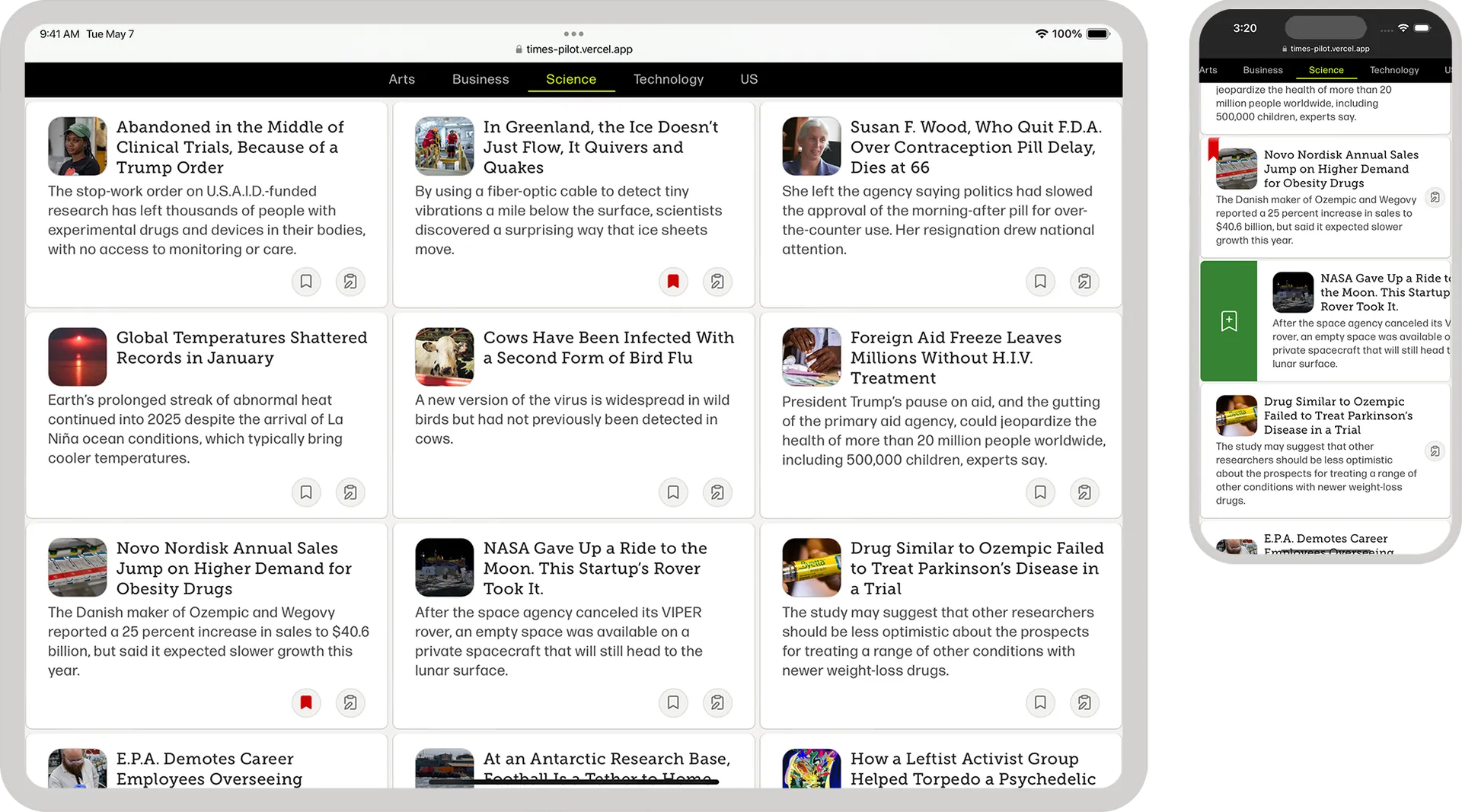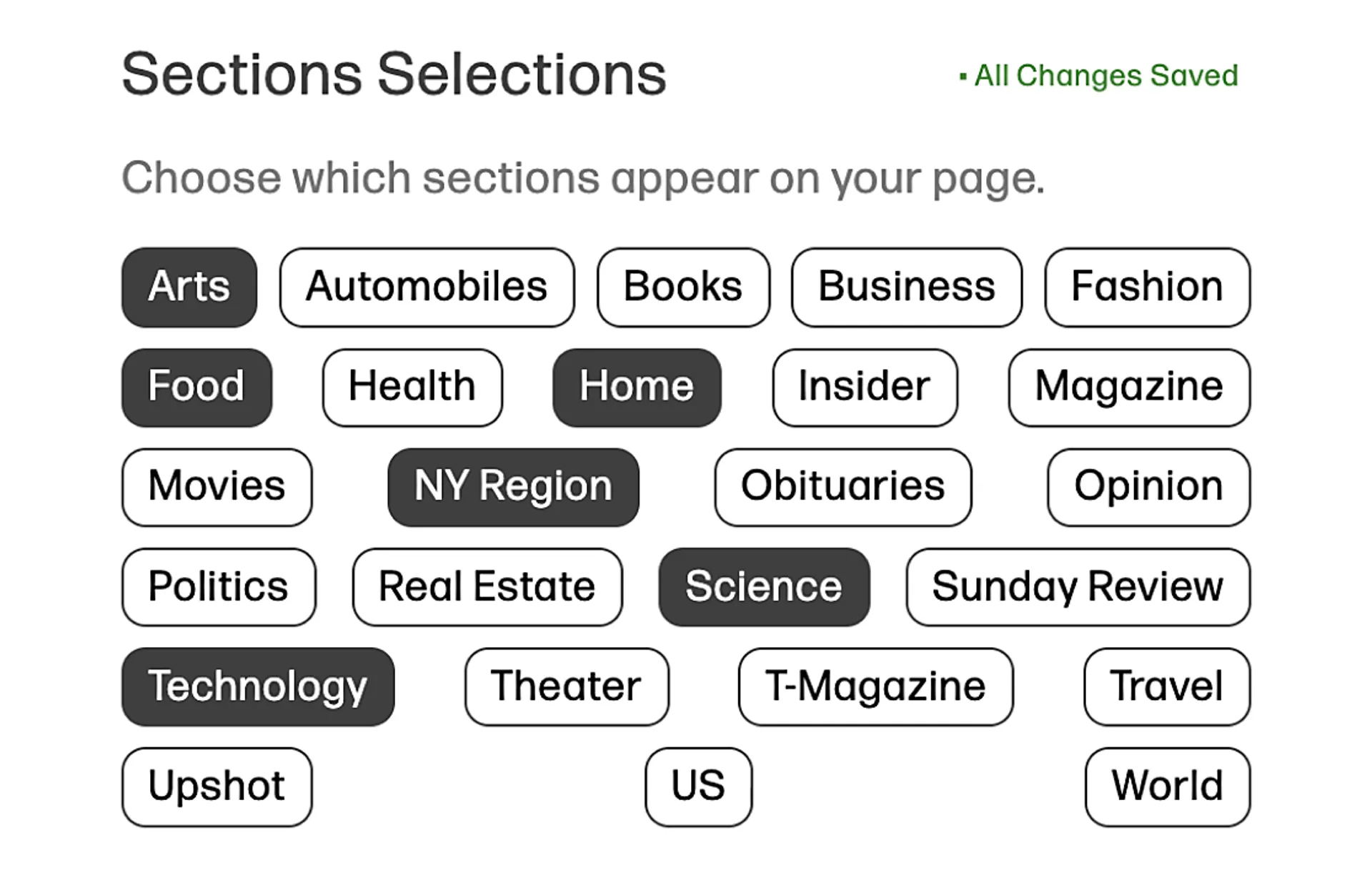Handling a World of Information
For most users, there's a struggle with the time commitment required to sift through the multiple sections and placement hierarchies to find stories that match their interests. Additionally, there's an absence of customizability in the daily New York Times top-stories email.

